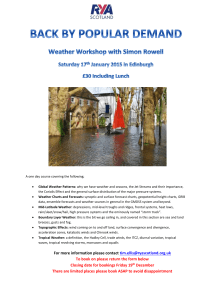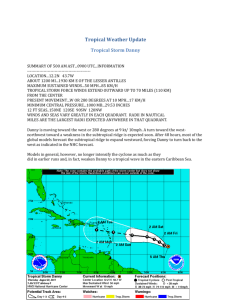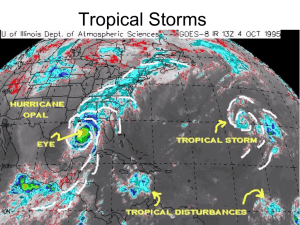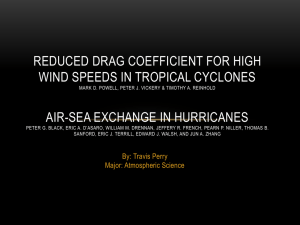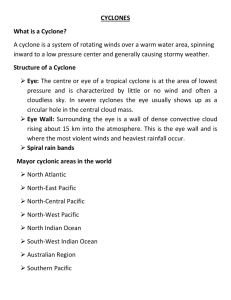Tropical Cyclone!!!
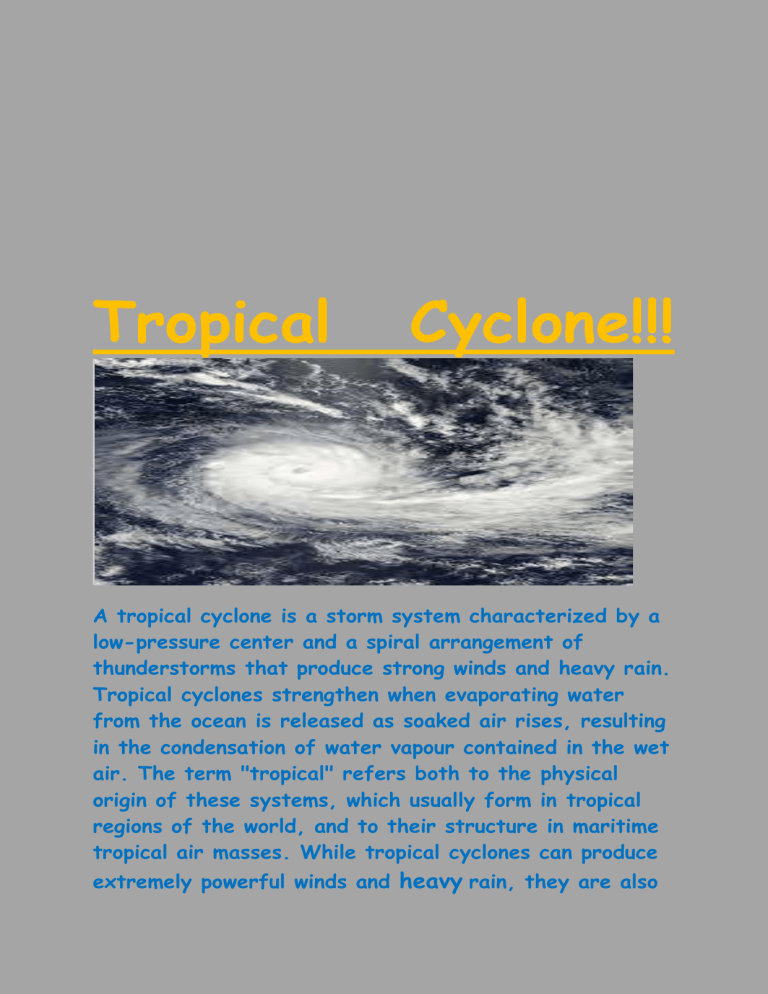
Tropical Cyclone!!!
A tropical cyclone is a storm system characterized by a low-pressure center and a spiral arrangement of thunderstorms that produce strong winds and heavy rain.
Tropical cyclones strengthen when evaporating water from the ocean is released as soaked air rises, resulting in the condensation of water vapour contained in the wet air. The term "tropical" refers both to the physical origin of these systems, which usually form in tropical regions of the world, and to their structure in maritime tropical air masses. While tropical cyclones can produce extremely powerful winds and
heavy
rain, they are also
able to generate high waves, damaging storm surge, and tornadoes. They develop over large bodies of warm water, and lose their strength if they move over land because of increased surface friction and loss of the warm ocean as an energy source. This is why coastal regions can sustain significant damage from a tropical cyclone, while inland regions are rather safe from receiving strong winds. Many tropical cyclones develop when the atmospheric conditions around a weak disturbance in the atmosphere are favorable.
Physical structure!!!
All tropical cyclones are areas of low pressure in the Earth's atmosphere. The pressures recorded at the centers of tropical cyclones are among the lowest that occur on Earth's surface at sea level. Tropical cyclones are characterized and driven by the release of large amounts of latent heat of condensation, which occurs when moist air is carried upwards and its water vapor condenses. This heat is distributed vertically around the center of the storm. Therefore, at any given altitude the environment inside the cyclone is warmer than its outer surroundings.
Damage!!!
Tropical cyclones threaten lives and property because of their high winds, associated storm surge, excessive rain and flooding, and ability to spawn tornadoes. As they make landfall, the winds and surge are the main threats.
Hurricane-force winds, by definition, exceed 119 kilometers per hour and have been recorded at over 325 kph. At the low end of this scale, trees can be uprooted. At the high end, buildings are completely destroyed. As strong winds blow across an ocean surface they create a large dome of water. The resulting storm surge presents a serious coastal hazard as hurricanes make landfall.



